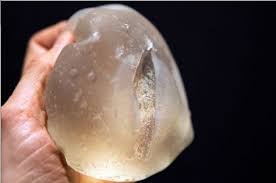Breast Augmentation
Breast Augmentation
Breast augmentation, also known as boob job, is a surgical procedure to enhance the size and shape of the breast. It involves placing breast implants under the breast tissue or chest muscles.
Breast augmentation can be performed using either silicone or saline implants, but it may also involve fat transfer. Fat transfer is less common and may not produce as much volume as a patient desire.
Breast augmentation is performed for a number of reasons:
- To enhance the body contour of a woman who feels her breast size is too small
- To restore breast volume lost after pregnancy or breastfeeding or due to weight loss
- To achieve symmetry when the breasts are asymmetrical
- To enhance appearance and self-confidence
- To create the appearance of a breast that is missing or disfigured due to heredity, trauma, or congenital abnormalities
Best Candidates for Breast Augmentation
Best candidates for breast augmentation are women:
- who are looking for improvement, not perfection, in the way they look
- who are in good general health
- who have reasonable expectations
- who are 18 or older
- who are not pregnant or breastfeeding
What Are Breast Implants?
A breast implant is a medical prosthesis that is placed inside the breast to increase breast size or to rebuild breast tissue after mastectomy or other damage to the breast.
Breast implants can differ in shape, size and volume. Depending on the breast anatomy, body type, and your desired increase in size, the choice of implant filler, implant shape, size, and other features will be determined. Moreover, your goals, lifestyle, and personal preferences as well as your plastic surgeon’s recommendations are other determining factors.
There are two main types of breast implants:
- Silicone implants are filled with silicone gel and are placed under the chest muscle to enlarge the breasts. These implants are considered safe and are often preferred for their natural feel. If you choose silicone implants, you may need to visit your plastic surgeon regularly to make sure the implants are functioning properly. These type of implants are FDA-approved for augmentation in women age 22 or older.
- Saline implants are similar to silicone implants but filled with a saline solution. These breast implants provide a uniform shape, firmness and feel. Saline implants are the only option allowed by the FDA for cosmetic breast enhancement in patients between the ages of 18 and 22.
Breast Augmentation Procedure
-
Anesthesia
Breast augmentation surgery is normally performed under general anesthesia, but sometimes, it can be done under local anesthesia. Your doctor will recommend the best choice for you.
-
Incision Options
There are three incisional approaches that are commonly used:
- Under the breast fold (Inframammary Incision)
- In the armpit (Axillary incision)
- Along the areolar edge (Peri-areolar Incision)
You and your surgeon should discuss which incision option is appropriate for you based on the degree of enlargement, type of breast implant, your particular anatomy.
-
Breast Implant Placement Options
There are two types of placement:
- Submuscular
- Subglandular
A submuscular placement goes under the chest muscle. This type of placement may reduce the risk of developing capsular contracture, result in less palpable implants, and offer easier mammographic imaging of the breast. Submuscular placement may result in a longer, more painful recovery than subglandular implants.
A subglandular, or submammary, placement goes behind the breast tissue, over the chest muscle. It may be less painful than submuscular placement. Implants that are subglandular may be easier to see and feel through the skin than implants that are submuscular. This type of placement may help reduce operative and recovery time.
-
Closing the incisions
After inserting implants, incisions are closed with layered sutures in the breast tissue and with sutures, skin adhesive or surgical tape to close the skin.
Risks and complications
Like any surgical procedure, there are some risks and potential complications associated with breast augmentation. Thus, it is important to discuss the risks and benefits of breast implant surgery with your plastic surgeon prior to surgery.
Possible breast augmentation surgery risks include:
- Painful breasts
- Infection
- Bleeding
- Hematoma
- The formation of tight scar tissue around the implant (capsular contracture)
- Fluid accumulation
- Rupturing or leaking of the implant
- Changes in nipple and breast sensation (often temporary)
- Wrong position of the implant
What Happens If Breast Implants Leak or Rupture?
In some cases, breast implants may break or leak. Rupture can occur as a result of injury or even from the normal compression and movement of your breast and implant, causing the man-made shell to leak.
If a saline-filled implant breaks or leaks, the implant will collapse in a few hours and the salt water will be absorbed and naturally expelled by the body.
If a silicone-gel filled implant leaks or breaks, the elastic silicone gel may remain within the implant shell, or may escape into the breast implant pocket. A leaking implant filled with silicone gel will not collapse.
How Long Do Breast Implants Last?
You should be aware that breast implants are not guaranteed to last a lifetime and future surgery may be required to replace one or both implants. The real length of time breast implants last is not really known, but the average saline or silicone implants may last anywhere from 10 to 20 years.
However, many are removed sooner due to complications, or cosmetic concerns. Up to 20 percent of people have their implants removed or replaced within 8 to 10 years. Also, the breasts will continue to age, and factors such as weight gain or weight loss might change the way the breasts look. These issues will likely lead to more surgery. Therefore, an MRI is recommended every 2-3 years but most people don’t do that. Instead they rely on their yearly mammograms to give them an indication if the implant is intact or ruptured.
Signs that replacement or removal is necessary
- Hardening
- Change in position
- Rippling and palpability
- Saline rupture (leakage and deflation)
- Silicone rupture (silent rupture)









Leave a Reply
Want to join the discussion?Feel free to contribute!